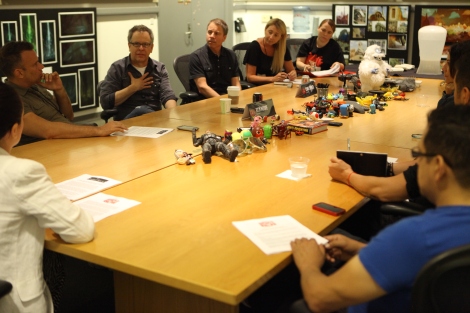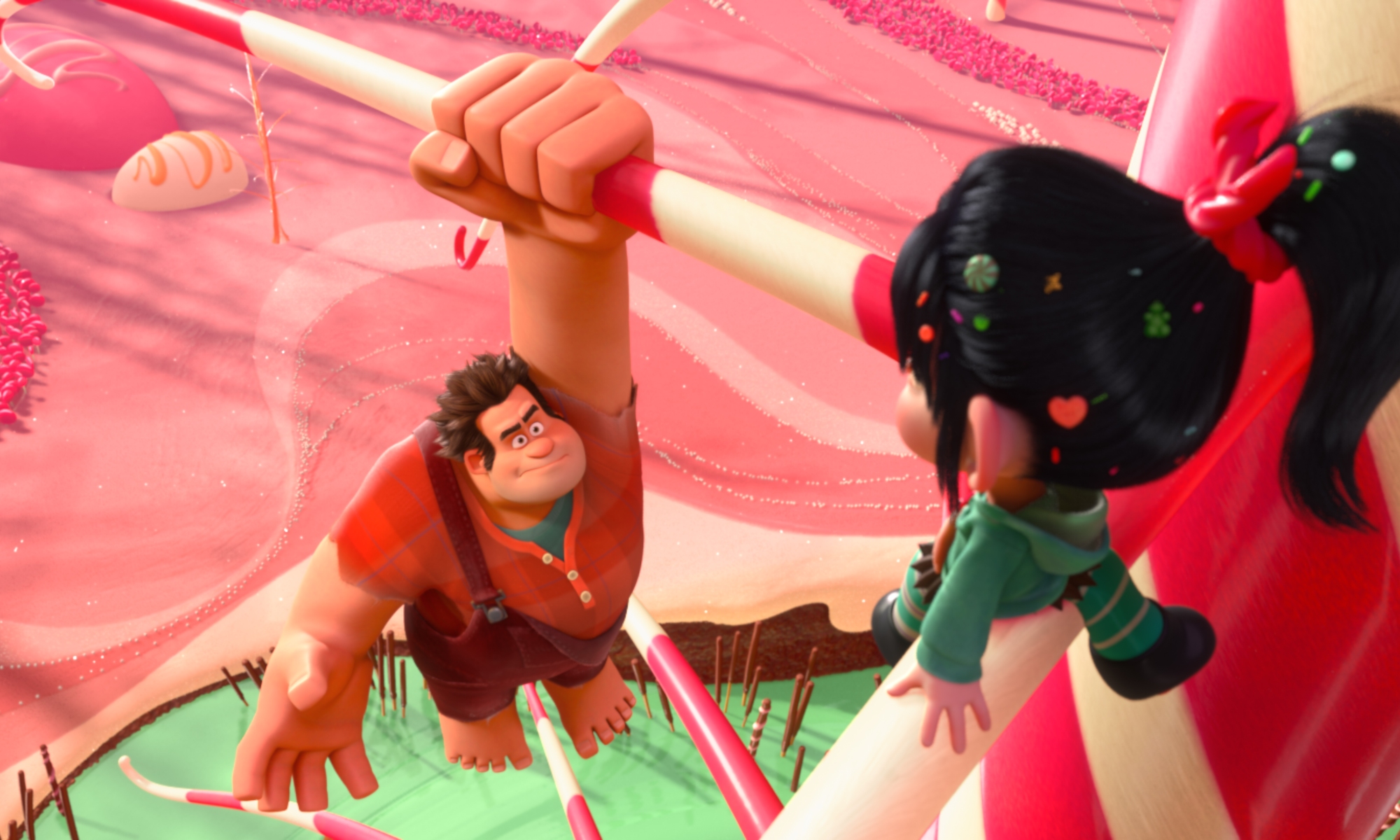Thomas J. McLean is an AwardsLine contributor. This article appeared in the Nov. 28 issue of AwardsLine.
For Wreck-It Ralph, Disney’s animated hit about an arcade videogame villain who wants more out of life, the movie hit its critical mass and graduated from an idea to becoming a real movie came via a tool borrowed from TV animation: the table read.
Director and cowriter Rich Moore, who spent the better part of two decades working on series from The Simpsons and Futurama to The Critic, Drawn Together, and Sit Down, Shut Up, imported the practice for the spring 2010 meeting at Pixar that included cast members Sarah Silverman, Jack McBrayer, Jane Lynch, and Alan Tudyk. “It’s a very, very useful tool for the filmmakers—to hear the characters come to life and to hear the dialogue, and to get a good pace for the movie, a feeling for the movie,” Moore says.

The result was so well received—even by absent lead actor John C. Reilly and executive producer John Lasseter—that the studio brought in producer Clark Spencer and a storyboarding team to kickstart the 3D CGI movie into full production.
Thanks to that energizing read in 2010, Wreck-It Ralph has become an animated hit for Disney, earning rave reviews since its Nov. 2 release and a $49 million opening weekend domestic gross. There’s also some Oscar-season buzz surrounding the film, despite an already-impressive animated slate from Disney that includes Brave and Frankenweenie.
Awards talk aside, Wreck-It Ralph’s success vindicates Disney’s long-held faith in the idea of an animated feature about videogames, which stretches back to the 1990s when the studio tried to develop projects with titles like Game On and Joe Jump. The idea still appealed to Disney Features Animation chief Lasseter in 2008, when he suggested it to studio newcomer Moore.

While Moore shares Lasseter’s affection for vintage arcade games, Moore says it was his teenage son who assured him youngsters still know Pac-Man and Space Invaders. “I never saw a Laurel and Hardy movie in a theater in my life, but I knew who they were as a kid,” says Moore. “And I think it’s kind of similar with these game characters.”
Moore passed on looking at previous attempts to develop a gaming movie and began with the characters. “I fell in love with this idea of telling a very kind of personal, internal story about a character that’s wondering, ‘Is this all there is to life?’”
Moore brought on writer Phil Johnston to flesh out the characters and come up with a story—often going down some admittedly weird roads on the way. “There were several days where we were convinced the best way for them to travel from game to game was through a portal in the toilet, like a vortex in the toilet,” says Johnston. “And that made sense to us for at least a week.”
“There was no screenplay at that point, it was a bunch of index cards and ideas being told through talking in the room,” says Moore. “Once we had those beats down, once we kind of knew what our story was and how we were going to get there, and the different worlds we have, Phil went about writing the screenplay.”
The characters were the key for the writing crew, which grew to include Jim Reardon and Jennifer Lee. Moore says they knew so early on they wanted Reilly, Silverman, McBrayer, and Lynch that they were able to tailor the characters to them. “It’s so rare for animation, but I knew the voices I was writing from the beginning,” says Johnston.
Positive reaction to the 2010 table read pushed the story from development into production. “We always knew that this was a movie that was probably going to get made, but the table read is kind of the moment where John (Lasseter) and the company say yes,” Spencer says.
As is the norm for today’s animated features, the story was constantly tested and revised: Spencer says it was put up on reels about seven times over an 18-month span. “I think that this is what makes animated films—when they’re done well—sharp, and gives them depth, because we are really going in and making each scene the best it can be and testing the relationships between the characters in a way that I don’t think exists in live action,” Moore explains.
Moore says the animation process for a feature differs little from television, save for the amount of time available. Production went so smoothly on the picture that Moore and Spencer were able to accommodate an earlier release date so the studio could give more time to Pixar’s upcoming Monsters University.
“Otherwise, we would have been coming out in spring of 2013, and it just seemed like a holiday release date better suited the movie, and it felt like we were in a place where we could pull it off,” says Moore.
Much of the buzz around the film stems from a wide range of videogame cameos, a move that was inspired by Moore’s affection for Who Framed Roger Rabbit? “I wanted to use the actual game characters in it, rather than creating kind of stand-in characters that evoke certain characters or that felt like they were an ersatz version of characters that people knew, because it really seemed like that would really lend an authenticity to the whole idea,” he says.
The filmmakers approached the story as though they had the rights to any game character they wanted, then Moore and Spencer themselves pitched the story to the game companies personally and got permission to use virtually every character they asked for.
While Ralph features fun moments for classic gaming characters from Pac-Man to Street Fighter, there was one obvious candidate—Nintendo’s Mario—who is not in the movie because the right moment for him just never came up. (Reports that Nintendo turned the movie down on financial grounds are false, Moore says, stemming from a joke Reilly made during a Comic-Con panel about Mario wanting too much money.)
Mario might get his chance to face Fix-It Felix Jr. and Wreck-It Ralph in a sequel, which Moore says he would be happy to tackle again for Disney; a work place he arrived at late in his career. “It was never someplace that I said, ‘In my career, I must work at Disney,’” Moore says. “But to be here now, I really feel like I am in the right place. Creatively it’s been the most satisfying project and job that I’ve ever had, and this is after working on amazing projects with wonderful people.”

